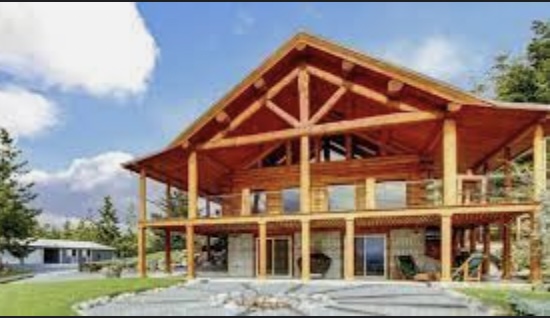Outdoor Architecture: A Starter Guide to Building a Log Cabin

Are you looking to get away from the city and find peace in nature? Well, building a log cabin might be just what you need. But what’s the best location for your cabin? How can you build a sturdy cabin that will last for many seasons?
Planning your first log cabin is not easy. That’s why we put together this outdoor architecture starter guide.
Keep reading to learn everything about building a log cabin and finding the best spot for it.
Create a Cabin Design
Creating a log cabin design can be both a daunting and satisfying task. The foundation of any great cabin design is architecture. When deciding on a design for a log cabin, consider two things; the intended use of the cabin and the desired aesthetic.
For example, a hunting cabin requires durable logs and windows that will keep out the elements, whereas a weekend getaway may require more luxury amenities.
Get a Proper Supply of Materials
Building a small log cabin is a great way to get back in touch with nature and explore the great outdoors. You will want to plan and gather all the proper materials before getting started.
Make sure that the logs you choose are of high quality, such as those made of dense woods like cedar, fir, or oak. If you want a more classic interior floor, get Rustic Wood Floor Supply. These type of floors works well with any cabin design.
Set Your Foundation
Setting a strong foundation is the key to any successful outdoor architecture project, and building a log cabin is no different. Once you have a secure base, use pre-cut logs and beams to build your walls and support systems. Implement a topsoil foundation using gravel and sand to keep your cabin level and secure.
Anchor the cabin in place with sufficient steel rods and secure any door frames and window frames accordingly. Fill in any gaps with log scraps or use a chinking compound to help seal up any cracks.
Layer Up the Logs
Layering up the logs is a critical step in building a log cabin from scratch. The step involves laying logs atop one another in a specific order, typically alternating corner and wall logs to provide stability.
To layer up the logs, the corner logs should be laid first to secure the walls in place and then alternating logs laid in succession, with each log extending beyond the one beneath it to create a wheel spoke effect. This process should be done from top to bottom and should be done with care to make sure the logs form a tight fit.
Sill the Logs
Building a small log cabin from the ground up can be a gratifying experience as you watch your structure become a reality, but sill logs are the foremost critical step for laying down the foundation for this construction. The sill logs are the bottom layer of the cabin and are generally very long logs that must be measured and cut specifically to build a square or rectangular frame.
It is essential to have these logs be level and evenly spaced when they are sills the logs so that the vertical upright logs remain firm in their support. It is recommended to have the sill logs treated with a wood preservative to withstand the outdoor elements and prevent rot.
Framing Your Roof
Framing your roof is an important step in building a log cabin. It will provide your cabin with structure and stability. Before roof framing, you must prepare the roof area by cutting and installing the roof rafters.
Once the rafters are placed, it’s time to install the ridge, or peak, of the roof. This is done by placing a specially designed timber frame to strengthen the rafters and add stability. Next, the roof sheathing panels and any flashing or venting must be added so that the roof system can be properly secured.
Attach Roofing Board or Sheath
Using a roofing board or sheathing to attach a roof to a log cabin is important for the long-term structural integrity of the cabin. The roof should be attached and bolted through the wall log or rafter, then sealed.
Plywood, some oriented strand board (OSB), and asphalt shingles are all viable options for roofing material. Plywood is one of the most common and simplest options but can be expensive. OSB is a cost-effective mid-ranking option.
Shingles are the most common choice, with asphalt shingles being the most common and most affordable. A layer of felt should be applied to the sheathing before installation to protect the cabin and occupants from weather damage.
Assemble the Door and Window
Assembling the door and window for a log cabin is not a tricky job but one that requires careful skill and attention to detail. First, measure and draw the layout for the door and window on the walls of the cabin. Cut out the logs the same width as the door and window pattern, leaving space for the supporting structure.
Start by making the basic frame of the door or window by connecting the logs with sturdy wooden pegs. Secure with protective weatherstrips that fit tightly against the wooden frame to make sure it’s watertight and insulated. Make sure the frame of the door or window is firmly attached to the cabin’s walls.
Properly Building a Log Cabin
Building a log cabin is a classic DIY project that will provide you with a solid structure with plenty of aesthetic charm. With the right materials, precise measurements, and detailed instructions, you can easily get started on creating a log cabin for yourself.
With the tips and steps from this article, you can have your retreat ready to go in no time! So don’t delay, start building a log cabin today!
If you want to read more exciting articles, visit our blog.




























